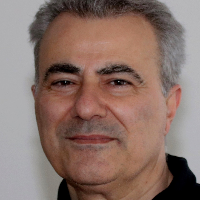
Henrik Shahgholian
- KTH Royal Institute of Technology
- Mathematics
- Full Professor
-
ArticleAnalysis on the steady Euler flows with stagnation points in an infinitely long nozzle
Posted by: Henrik Shahgholian
-
ArticlePointwise estimates for systems of coupled $p$-Laplacian elliptic equations
Communications on Pure and Applied Analysis (CPAA) 22 (3), 899-921, 2023
Posted by: Henrik Shahgholian
DOIMSC 2010: 35J60 35B53 47J10
-
ArticleA transmission problem with ($p,q$)-Laplacian
Communications in Partial Differential Equations 48 (2), 315-349, 2023
Posted by: Henrik Shahgholian
-
ArticleAlmost minimizers for a sublinear system with free boundary
Calculus of Variations and Partial Differential Equations 62 (5), Paper No. 149, 43, 2023
Posted by: Henrik Shahgholian
DOIMSC 2010: 35R35 35J60
-
ArticleOn global solutions of the obstacle problem
Duke Mathematical Journal 172 (11), 2149-2193, 2023
Posted by: Henrik Shahgholian
DOIMSC 2010: 35R35 35J05
-
ArticleThe structure of the regular part of the free boundary close to singularities in the obstacle problem
Journal of Differential Equations 377, 873-887, 2023
Posted by: Henrik Shahgholian
-
ArticleThe Inhomogeneous Boundary Harnack Principle for Fully Nonlinear and p-Laplace equations
Ann. Inst. H. Poincaré C Anal. Non Linéaire 40 (1), 133–156., 2023
Posted by: Henrik Shahgholian
-
Article"Women History Month”: Nina Nikolaevna Uraltseva
Notices of the American Mathematical Society 69 (3), 385–395, 2022
Posted by: Henrik Shahgholian
-
ArticleInhomogeneous global minimizers to the one-phase free boundary problem
Communications in Partial Differential Equations (accepted) 47 (6), 1193--1216, 2022
Posted by: Henrik Shahgholian
-
ArticleRegularity of the free boundary for a parabolic cooperative system
Calculus of Variations and Partial Differential Equations 61 (4), 2022
Posted by: Henrik Shahgholian

Social share